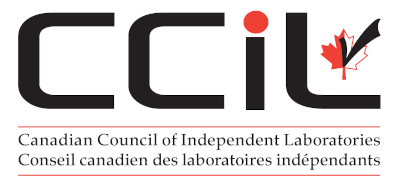Revenue
The industry’s annual revenues total $2.3 billion.
Source: Statistics Canada, Summary Statistics for Testing Laboratories, 2010
Number, Location and Size of Establishments
There are about 2,700 testing laboratory facilities in Canada.
Source: Statistics Canada, Summary Statistics for Testing Laboratories, 2010
The industry is concentrated in four provinces – Alberta has 39% of total lab facilities, Ontario has 28%, followed by B.C. at 15% and Quebec at 12%.
Source: Statistics Canada, Canadian Business Patterns, June 2011
Lab clusters, or locations where there is a concentration of lab operations, are evident in Calgary, Edmonton, Toronto, Montreal and Vancouver.
Source: Statistics Canada, Canadian Business Patterns, June 2011
The industry is made up of many small and medium-sized enterprises (SMEs). About three-quarters of all lab facilities in Canada have fewer than 10 employees. Across the country, there are only 12 lab locations with 200 or more employees.
Source: Statistics Canada, Canadian Business Patterns, June 2011
Employment
The testing laboratories industry in Canada employs about 20,000 people.
Source: CCIL based on Statistics Canada data
Education Level of Employees
Testing laboratories are a knowledge-based industry. Over 40% of the industry’s employees are university graduates, largely with science and engineering degrees.
Source: CCIL based on Statistics Canada data
Wages, Salaries and Benefits
The industry pays about $975 million a year in wages, salaries and benefits.
Source: Statistics Canada, Summary Statistics for Testing Laboratories, 2010
Testing labs are labour-intensive businesses. Salaries, wages and benefits account for about one-half (47%) of the industry’s operating expenses.
Source: Statistics Canada, Summary Statistics for Testing Laboratories, 2010
Average Annual Salary
The average annual salary per employee is about $50,000.
Source: CCIL based on Statistics Canada data
The industry provides “high-value employment with average wages and salaries greater than those found in the economy as a whole.”
Statistics Canada, Innovation in Selected Professional, Scientific and Technical Services, 2005
GDP
GDP in the testing laboratories industry increased more than 20% between 2005 and 2011 – compared to an increase of 9% for the overall economy during the same period.
Source: CCIL based on Statistics Canada data
Major Markets
Testing labs serve a vast array of customers across the economic spectrum, including:
- Road building
- ICI and residential construction
- Environmental
- Water and waste water
- Automobile
- Mining
- Pulp and paper
- Agriculture
- Food
- Pharmaceutical
- Oil and gas
- Manufacturing
- Metals production
- Biotechnology/life sciences
Types of Testing Services
The types of testing services provided by the industry in Canada include:
Source: Statistics Canada
- Assaying
- Automobile proving and testing ground
- Biological (except clinical and veterinary)
- Calibration and certification
- Electrical
- Environmental
- Construction materials
- Film badge
- Fire insurance underwriters’ laboratories
- Food
- Forensic
- Geotechnical
- Hydrostatic
- Industrial
- Mechanical
- Metallurgical
- Non-destructive
- Pharmaceutical
- Product testing
- Radiation
- Radiographic
- Radon
- Seed
- Soil
- Thermal
- Vibration
- X-ray
